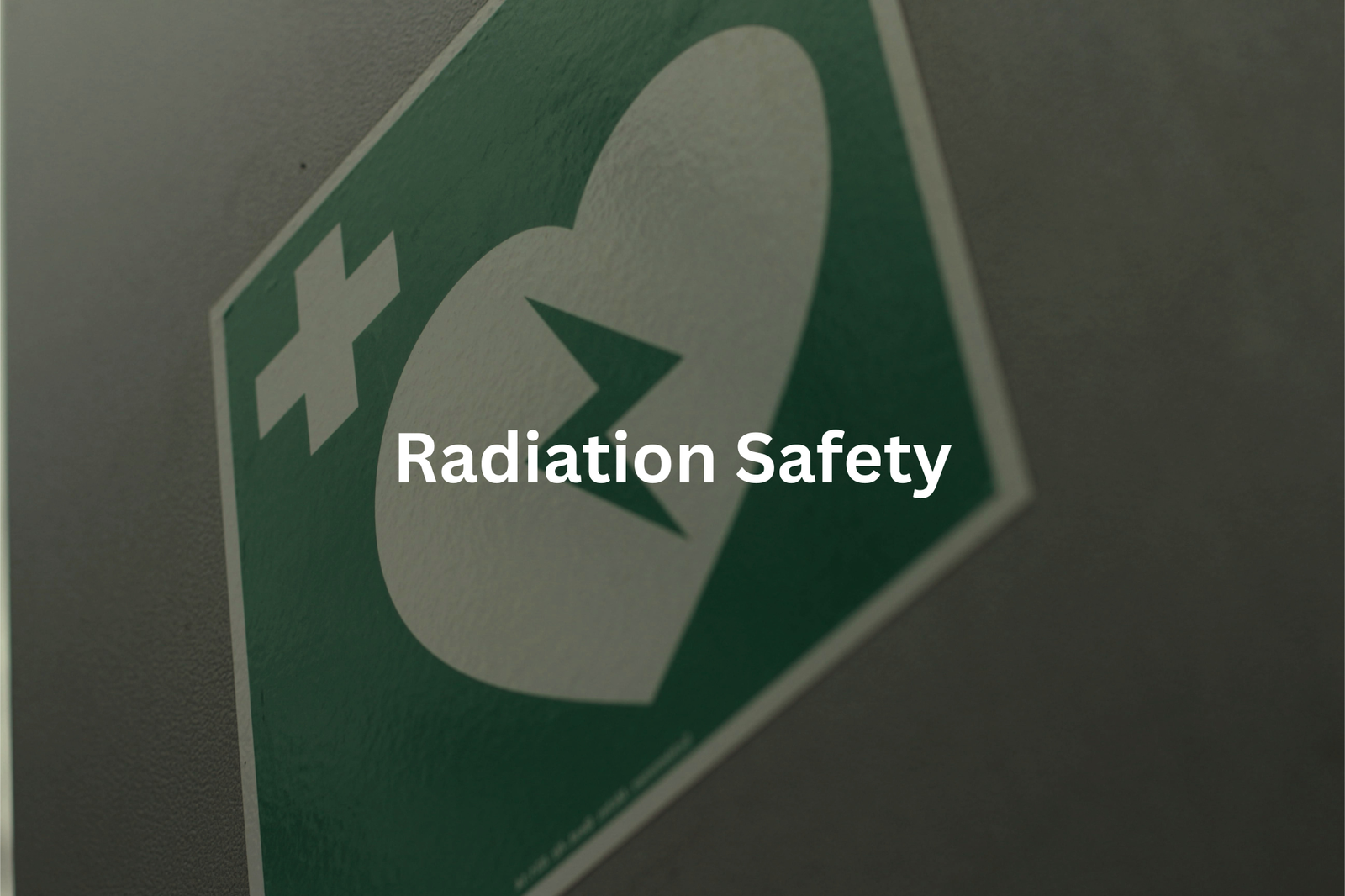Radiology tests don’t have to be scary. Here’s how to address common patient concerns and make your experience more comfortable.
Radiology is a part of healthcare that uses machines to take pictures of our insides. When people get tests like MRIs or X-rays, they often feel worried. It’s normal to be concerned about what will happen, how safe it is, or if it’ll hurt. I’ve seen friends get anxious before their tests, which is totally understandable.
To help, healthcare workers can explain each step clearly and share safety info to ease fears. Talking about worries helps too. So, if you’re feeling nervous about a radiology test, ask questions. It might make things feel a lot less scary! Keep reading for more tips.
Key Takeaway
- Patients often worry about safety when getting imaging tests.
- Open communication with healthcare providers helps reduce anxiety.
- Understanding the procedures and preparation can make things easier.
General Anxiety
It’s pretty normal to feel a bit nervous before a radiology test(1). My cousin once needed an X-ray, and he had a ton of questions. He asked what the machine would do, how it would feel, and how long it’d take. At first, I thought he was just stressing too much, but honestly, asking questions helped him feel calmer. It made the whole thing less scary.
Radiology tests can feel strange. You’re in a room with machines that hum, beep, and sometimes click. It’s easy to feel out of place. But when someone explains what’s going to happen, it’s like the mystery fades. Knowing the test will only take 10 minutes or that the machine won’t touch you can make a big difference.
So, if you’re ever feeling unsure, ask. Whether it’s the nurse or the technician, they’re there to help. A little knowledge can go a long way in easing your mind.
Radiation Safety

People sometimes worry about the radiation in medical tests like X-rays or CT scans. My cousin once had a chest X-ray and asked, “Is this safe?” It’s a good question. But the radiation levels are usually very low, and doctors take care to keep it that way.
A chest X-ray, for example, uses about 0.1 millisieverts (mSv) of radiation. (That’s a unit to measure exposure.) To compare, that’s roughly the same as being outside for ten days. A CT scan of the abdomen is higher, around 10 mSv, but still considered safe when needed. For context, we naturally get 2-3 mSv a year from the sun and environment.
If you’re nervous, ask your doctor or radiologist about the test. They’ll explain why it’s necessary and how they minimise risks. Understanding this can ease your mind. These tests are tools to help, not harm.
Procedure Duration
I remember my first X-ray. It was over in just a few minutes, which was a relief because I’d been so nervous. Later, I learned that other scans, like CTs and MRIs, take much longer. It surprised me. CT scans can last 15 to 60 minutes, depending on what’s being checked, while MRIs might take up to an hour—and they’re noisy too. If I’d known that earlier, I reckon I’d have felt more prepared.
Here’s a quick guide for timing:
- X-ray: 5–10 minutes.
- CT scan: 15–60 minutes.
- MRI: Up to 1 hour (and bring earplugs if noise bothers you).
Knowing this ahead of time can help ease some of the nerves. It’s always okay to ask your doctor or technician how long your specific test will take. A little information can make the experience feel less overwhelming.
Preparation Needs
Sources: Deakin University.
Getting ready for a radiology test can feel a bit strange, almost like preparing for something out of the ordinary. I remember my first MRI—it felt like stepping into a sci-fi movie. But knowing what to do ahead of time made it much easier.
For instance, if you’re having a CT scan with contrast dye, drinking water after the test is super important. It helps clear the dye from your body (and can ease that odd metallic taste some people notice). For MRIs, wearing loose, comfy clothes without any metal is a smart move. Metal can mess with the images and might even make the machine noisier.
Here’s a quick prep list:
- Wear loose, metal-free clothing.
- Stay hydrated, especially after a CT with dye.
- Leave jewellery and metal items at home.
These small steps can make the experience smoother and less stressful. Always ask questions if you’re unsure!
Claustrophobia Issues
MRI machines can feel a bit scary. The tight space and loud banging noises make it hard to relax. My friend once said it felt like being stuck in a giant tin can. She was nervous, but she found a few tricks that helped her stay calm.
Here are some ideas that might work for you(2):
- Headphones: Listen to music or calming sounds to block out the noise.
- Bring something familiar: A small pillow or blanket can make you feel more at ease.
- Ask questions: Talk to the technician. Knowing how long the scan will take can make it less overwhelming.
Even though the space feels cramped, these machines are designed to keep you safe and still for clear images. The key is finding small comforts to make the experience feel less clinical. A favourite song or a familiar item can make all the difference.
Myth Debunking
There’s a lot of confusion about medical tests, especially MRIs. People often think MRIs involve radiation, but that’s not true. MRIs use magnetic fields and radio waves, not radiation (totally different). It’s safe, like how your car radio picks up signals—no harm done.
Another myth is that these tests hurt. Honestly, most don’t. I remember waiting for my first MRI, feeling nervous, but it wasn’t painful at all. Sure, MRIs can be loud, but that’s about it.
Here’s a quick myth-busting list(3):
- Radiation: Nope, MRIs don’t use it. Magnets and radio waves only.
- Pain: Most tests are painless.
- Time: A CT scan might take up to an hour, but it’s manageable.
- Claustrophobia: Feeling cramped? It’s common, but preparation helps.
Understanding the truth about medical tests can ease nerves. Knowing what to expect makes the experience way less scary.
Communication Importance
Talking to doctors or nurses can really help patients feel less worried. I’ve noticed this myself during medical tests—asking a few simple questions made things much easier. It’s not always easy to speak up, but it’s worth it.
For example, patients might ask, “What happens during the test?” or “Are there side effects?” Once, before an MRI, I asked a nurse what to expect. She explained it would be loud but not painful, which helped me feel calmer.
Here are a few helpful questions to consider:
- What should I expect during the test?
- Are there side effects?
- How should I prepare?
- What if I feel uncomfortable?
Many hospitals now encourage patients to ask questions, which is great. It’s like having a team on your side. So, if you’re unsure about something, don’t hesitate to ask. It can make the whole experience much less stressful.
Advanced Technologies

I’ve always thought it’s pretty wild how radiology has changed over the years. Tele-radiology, for instance, allows doctors to read images like X-rays or CT scans from miles away (sometimes even thousands of kilometres). This is a big deal for people in rural areas who might not have a radiologist nearby. It’s like having a specialist on call, no matter where you are.
Here’s how it works:
- Images are sent digitally through secure networks.
- Specialists review them remotely, often from larger hospitals.
- Patients get results faster, without needing to travel far.
This tech is a game-changer for rural healthcare. I’ve read it can cut wait times by half in some cases. Imagine living hours from the nearest hospital and still getting a diagnosis quickly. It’s not perfect—nothing is—but it’s a huge step forward. If you’re ever far from a city, this could be a real lifesaver.
Patient-Friendly Approaches
It’s interesting how radiology is becoming more patient-focused these days. I’ve noticed that people aren’t just left guessing about what’s going to happen anymore. Instead, doctors and nurses take time to explain things clearly, which can make a big difference. I remember watching a video once where a doctor explained every step of an MRI scan—it made the whole thing seem less scary.
Here’s how it usually works:
- Clear communication: They explain what the test involves (like sounds or how long it’ll take).
- Comfortable spaces: Clinics often have softer lighting or calming music.
- Patient involvement: You’re encouraged to ask questions or share concerns.
When patients know what’s coming, they often feel less nervous. Studies even show that informed patients are more satisfied with their care. So, if you ever need a scan, don’t hesitate to ask questions. Knowing a little can make the whole experience much easier.
FAQ
What are the key points related to patient care in radiology?
The key points related to patient care in radiology include providing high-quality and safety-focused imaging services, minimising radiation exposure, managing contrast media reactions, and promoting patient engagement and satisfaction. Radiology professionals must prioritise patient safety, image quality, and effective communication to deliver centred care that meets the needs of diverse patient populations.
How can patients access important information about radiology services?
Patients can access important information about radiology services through online patient portals, which allow direct communication with providers, review of radiology reports, and management of appointments and imaging procedures. Additionally, radiology departments often provide patient-friendly resources, such as educational materials on imaging tests and safety guidelines, to empower patients and improve their overall experience.
What are the safety issues and adverse effects associated with medical imaging?
The main safety issues and adverse effects associated with medical imaging involve radiation exposure, contrast media reactions, and potential complications from imaging procedures. Radiology professionals must carefully manage radiation doses, monitor for allergic reactions to contrast agents, and implement protocols to minimise risks for high-risk patients, such as those with chronic kidney disease or previous adverse reactions.
How can patients find reliable information about radiology online?
Patients can find reliable information about radiology online through reputable sources like medical journal articles indexed on Google Scholar, open-access publications in journals like Insights Imaging and the European Journal of Radiology, and patient-focused resources from professional societies and healthcare organisations. These sources provide authoritative, evidence-based insights on imaging modalities, safety, and best practices for patient-centred care.
What role does social media play in radiology patient engagement?
Social media platforms can be valuable tools for radiology departments to engage with patients, share educational content, and foster open discussions about imaging services and safety. Online forums and patient communities allow individuals to connect, share experiences, and access support from both healthcare providers and fellow patients. Leveraging social media can improve patient empowerment and strengthen the patient-provider relationship in radiology.
Conclusion
It’s really important to understand what patients are worried about when they go for a radiology test. Good communication helps ease those worries. When doctors and nurses share clear information, it makes patients feel safer and builds trust. So, if you or someone you know is having a radiology test soon, don’t hesitate to ask questions. Being informed can help you feel better and make the whole experience much easier. Trust me, a little knowledge goes a long way!
References
- https://xray.com.au/medical-anxiety/
- https://i-med.com.au/articles/claustrophobia-mri-scan
- https://lydiarddental.com.au/debunking-the-myths-about-radiographs/




